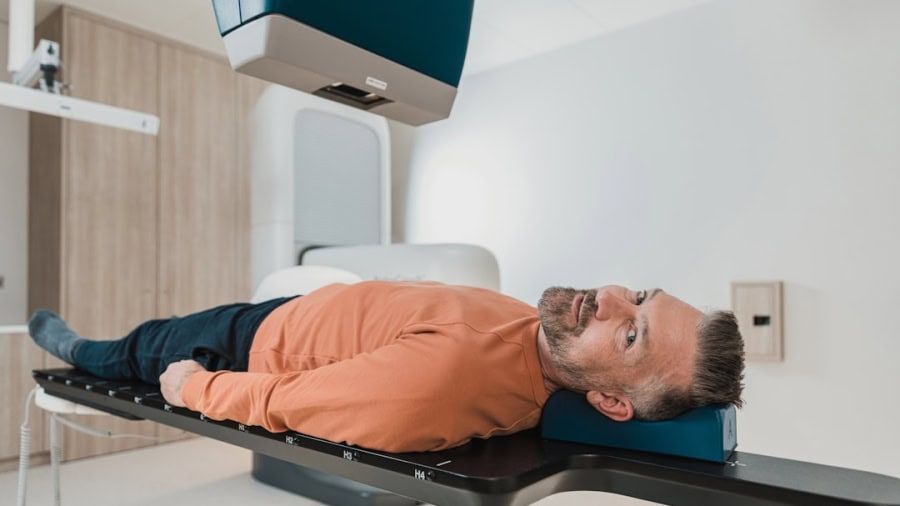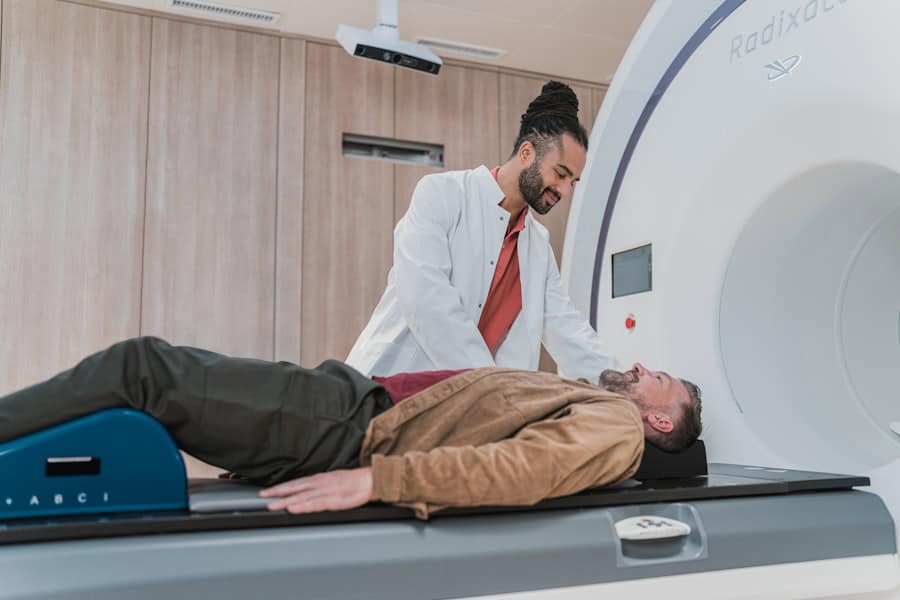The integration of artificial intelligence (AI) into the realm of medical diagnoses marks a transformative shift in healthcare, one that promises to enhance the precision and efficiency of patient care. As the volume of medical data continues to swell, driven by advancements in technology and the proliferation of electronic health records, the need for sophisticated analytical tools has never been more pressing. AI systems, particularly those employing machine learning algorithms, are designed to sift through vast datasets, identifying patterns and correlations that may elude even the most seasoned medical professionals.
This capability not only streamlines the diagnostic process but also empowers healthcare providers to make more informed decisions, ultimately leading to improved patient outcomes. Moreover, the application of AI in medical diagnoses is not merely a futuristic concept; it is already being implemented in various clinical settings around the globe. From radiology to pathology, AI algorithms are being trained to recognize anomalies in imaging studies and histopathological samples with remarkable accuracy.
The potential for AI to augment human expertise is vast, as it can analyze data at a speed and scale that is simply unattainable for human practitioners. As we delve deeper into this topic, it becomes evident that AI is not just a tool for diagnosis but a catalyst for a broader evolution in how healthcare is delivered, paving the way for innovations that could redefine patient care.
Key Takeaways
- AI is revolutionizing medical diagnoses by improving accuracy and early detection of diseases.
- AI is playing a crucial role in personalized medicine by analyzing individual patient data and tailoring treatments accordingly.
- Ethical considerations in AI-assisted diagnoses include patient privacy, data security, and the potential for bias in algorithms.
- Challenges and limitations of AI in medical diagnoses include the need for extensive data, potential errors in algorithm predictions, and the requirement for human oversight.
- The future of AI in medical diagnoses holds promise for further advancements in accuracy, efficiency, and personalized treatment options.
How AI is Improving Accuracy in Medical Diagnoses
Enhancing Diagnostic Accuracy with AI
One of the most significant contributions of AI to medical diagnoses lies in its ability to enhance accuracy. Traditional diagnostic methods often rely on subjective interpretations and can be influenced by a myriad of factors, including the clinician’s experience and cognitive biases. In contrast, AI systems utilize algorithms trained on extensive datasets, allowing them to provide objective assessments based on empirical evidence.
AI in Radiology: A Notable Example
For instance, in radiology, AI has demonstrated an impressive ability to detect conditions such as tumors or fractures in imaging studies with a level of precision that rivals or even surpasses human radiologists. This capability not only reduces the likelihood of misdiagnosis but also alleviates the burden on healthcare professionals who may be overwhelmed by increasing patient loads. Furthermore, the continuous learning aspect of AI systems means that their accuracy improves over time as they are exposed to more data.
Refining Diagnostic Algorithms through Continuous Learning
This iterative process allows for the refinement of diagnostic algorithms, enabling them to adapt to new medical knowledge and emerging disease patterns. For example, AI models can be updated with the latest research findings or clinical guidelines, ensuring that they remain relevant and effective in real-world applications. As these systems evolve, they hold the potential to significantly reduce diagnostic errors, which are a leading cause of adverse patient outcomes.
Improving Patient Care and Healthcare Efficiency
By providing clinicians with reliable diagnostic support, AI not only enhances individual patient care but also contributes to the overall efficiency and effectiveness of healthcare systems.
The Role of AI in Early Detection of Diseases
Early detection of diseases is crucial for improving treatment outcomes and reducing mortality rates, and AI is playing an increasingly vital role in this area. By analyzing data from various sources—such as medical imaging, genetic information, and patient history—AI algorithms can identify subtle indicators of disease long before symptoms manifest. For instance, in oncology, machine learning models have been developed to analyze mammograms and detect breast cancer at stages when it is most treatable.
These systems can highlight areas of concern that may be overlooked by human eyes, thereby facilitating earlier intervention and potentially saving lives. In addition to imaging studies, AI’s capabilities extend to predictive analytics based on electronic health records (EHRs). By examining patterns in patient data, such as lab results and vital signs, AI can flag individuals at high risk for conditions like diabetes or cardiovascular disease.
This proactive approach allows healthcare providers to implement preventive measures or lifestyle modifications before the disease progresses. The ability to harness vast amounts of data for early detection not only enhances individual patient care but also has broader implications for public health by enabling targeted screening programs and resource allocation.
AI’s Impact on Personalized Medicine
The advent of AI has ushered in a new era of personalized medicine, where treatment plans can be tailored to the unique characteristics of each patient. By analyzing genetic information alongside clinical data, AI systems can identify specific biomarkers that predict how an individual will respond to certain therapies. This level of customization is particularly valuable in fields like oncology, where treatments can vary significantly based on genetic mutations present in tumors.
With AI’s analytical prowess, oncologists can select therapies that are more likely to be effective for each patient, thereby maximizing treatment efficacy while minimizing adverse effects. Moreover, personalized medicine extends beyond pharmacogenomics; it encompasses lifestyle factors and social determinants of health as well. AI can integrate diverse datasets—ranging from genomic data to socioeconomic information—to create comprehensive profiles that inform treatment decisions.
For instance, an AI system might analyze a patient’s genetic predisposition to a condition alongside their lifestyle choices and environmental exposures to recommend a holistic treatment plan. This multifaceted approach not only enhances the precision of medical interventions but also fosters a deeper understanding of how various factors interact to influence health outcomes.
Ethical Considerations in AI-Assisted Diagnoses
As with any technological advancement, the integration of AI into medical diagnoses raises important ethical considerations that must be addressed. One primary concern revolves around data privacy and security. The use of AI necessitates access to vast amounts of sensitive patient information, which raises questions about how this data is stored, shared, and protected from breaches.
Ensuring that patient confidentiality is maintained while leveraging AI’s capabilities is paramount; otherwise, trust in healthcare systems could be compromised. Additionally, there is a need for transparency regarding how AI algorithms make decisions, as opaque processes can lead to skepticism among both patients and healthcare providers. Another ethical consideration pertains to bias in AI algorithms.
If the datasets used to train these systems are not representative of diverse populations, there is a risk that the resulting models may perpetuate existing disparities in healthcare outcomes. For instance, an algorithm trained predominantly on data from one demographic group may not perform as well for individuals from different backgrounds. This highlights the importance of inclusivity in data collection and algorithm development to ensure equitable access to accurate diagnoses across all populations.
Addressing these ethical challenges is essential for fostering public confidence in AI technologies and ensuring that their benefits are realized universally.
Challenges and Limitations of AI in Medical Diagnoses
Challenges in Implementing AI in Medical Diagnoses
The application of Artificial Intelligence (AI) in medical diagnoses holds great promise, but it is not without its challenges and limitations. One significant hurdle is the need for high-quality data to train effective algorithms. In many cases, healthcare data can be incomplete or inconsistent due to variations in documentation practices across institutions or even within individual practices.
Data Quality and Standardization
This lack of standardization can hinder the development of robust AI models capable of delivering accurate diagnoses across diverse clinical settings. Furthermore, the reliance on historical data may inadvertently reinforce existing biases or inaccuracies present in the dataset. This can lead to AI models that are not only ineffective but also perpetuate existing healthcare disparities.
Integrating AI into Clinical Workflows
Another challenge lies in the integration of AI systems into existing clinical workflows. Healthcare providers often face time constraints and may be resistant to adopting new technologies that require changes to established practices. Additionally, there may be concerns about over-reliance on AI tools at the expense of clinical judgment. Striking a balance between leveraging AI’s capabilities and maintaining human oversight is crucial; clinicians must feel empowered to question or override algorithmic recommendations when necessary.
Collaboration and Future Solutions
Overcoming these challenges will require collaboration among technologists, clinicians, and policymakers to create solutions that enhance rather than disrupt patient care. By working together, we can develop AI systems that support clinicians, improve patient outcomes, and transform the healthcare landscape for the better.
The Future of AI in Medical Diagnoses
Looking ahead, the future of AI in medical diagnoses appears both promising and complex. As technology continues to advance at an unprecedented pace, we can expect further innovations that will enhance diagnostic accuracy and efficiency. The development of more sophisticated algorithms capable of processing multimodal data—such as combining imaging studies with genomic information—will likely lead to even more precise diagnoses and treatment recommendations tailored to individual patients’ needs.
Additionally, as healthcare systems increasingly adopt telemedicine and remote monitoring technologies, AI will play a pivotal role in analyzing real-time data from wearable devices and other sources to facilitate timely interventions. However, realizing this potential will require ongoing efforts to address ethical concerns and ensure equitable access to these technologies across diverse populations. Policymakers will need to establish regulatory frameworks that promote transparency and accountability while safeguarding patient privacy.
Furthermore, fostering collaboration between technologists and healthcare professionals will be essential for developing user-friendly tools that seamlessly integrate into clinical workflows without compromising patient care quality. As we navigate this evolving landscape, it is crucial to remain vigilant about the implications of AI in medicine while embracing its potential to revolutionize diagnostics and improve health outcomes for all individuals.
While exploring the impact of AI on various sectors, particularly in medical diagnoses, it’s also insightful to consider how AI is enhancing other fields. For instance, AI’s role in content creation and optimization is becoming increasingly significant. A related article that delves into this application of AI is “Boost Your Content with NeuronWriter: SEO & NLP Optimization.” This piece explores how AI tools like NeuronWriter utilize SEO and NLP to optimize content for better performance on search engines, which is crucial for digital marketing success. You can read more about this application of AI in content optimization by visiting Boost Your Content with NeuronWriter: SEO & NLP Optimization.
FAQs
What is AI?
AI, or artificial intelligence, refers to the simulation of human intelligence in machines that are programmed to think and act like humans. This includes tasks such as learning, problem-solving, and decision-making.
How is AI used in medical diagnoses?
AI is used in medical diagnoses to analyze large amounts of data, including medical records, images, and test results, to help healthcare professionals make more accurate and timely diagnoses. AI can also assist in identifying patterns and trends that may not be immediately apparent to human practitioners.
What are the benefits of using AI in medical diagnoses?
The use of AI in medical diagnoses can lead to more accurate and efficient diagnoses, potentially leading to earlier detection of diseases and better patient outcomes. AI can also help reduce human error and provide support to healthcare professionals in making complex decisions.
Are there any limitations to using AI in medical diagnoses?
While AI has the potential to greatly improve medical diagnoses, there are limitations to its use, including the need for large amounts of high-quality data, potential biases in the algorithms, and the importance of human oversight in interpreting AI-generated results.
What are some examples of AI technologies used in medical diagnoses?
Some examples of AI technologies used in medical diagnoses include machine learning algorithms, natural language processing, and computer vision. These technologies can be used to analyze medical images, interpret clinical data, and assist in decision-making processes.



